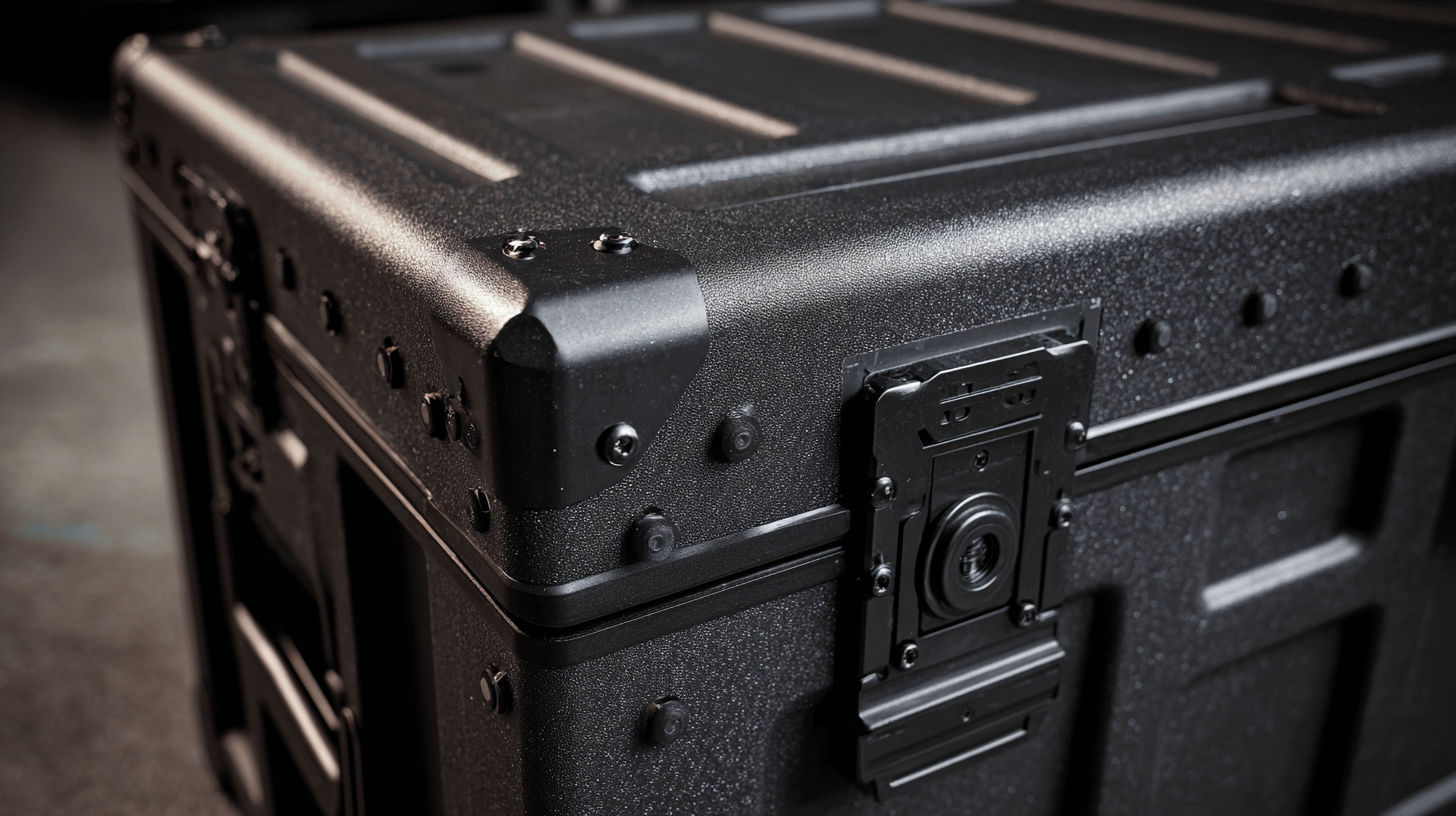Leave Your Message
 When it comes to safeguarding valuable equipment during transport, selecting the right
Flight Case Corners is crucial for ensuring maximum protection
and durability. According to a recent industry report from the International Safe Transit Association, more than
70% of equipment damage occurs in transit, underscoring the importance of robust
protective features in flight cases. Flight Case Corners are not merely accessories; they play a pivotal role in absorbing
impact and distributing forces, ultimately extending the lifespan of the equipment housed within. Various materials and designs are available,
each offering unique benefits for specific applications, making it essential to understand the alternatives in the market.
Choosing suitable Flight Case Corners not only enhances protection but also contributes to
the overall efficiency and cost-effectiveness of transporting sensitive gear. In this blog post, we will explore the different types of
Flight Case Corners available, analyzing their advantages and applications to guide you in making
an informed decision for your protection needs.
When it comes to safeguarding valuable equipment during transport, selecting the right
Flight Case Corners is crucial for ensuring maximum protection
and durability. According to a recent industry report from the International Safe Transit Association, more than
70% of equipment damage occurs in transit, underscoring the importance of robust
protective features in flight cases. Flight Case Corners are not merely accessories; they play a pivotal role in absorbing
impact and distributing forces, ultimately extending the lifespan of the equipment housed within. Various materials and designs are available,
each offering unique benefits for specific applications, making it essential to understand the alternatives in the market.
Choosing suitable Flight Case Corners not only enhances protection but also contributes to
the overall efficiency and cost-effectiveness of transporting sensitive gear. In this blog post, we will explore the different types of
Flight Case Corners available, analyzing their advantages and applications to guide you in making
an informed decision for your protection needs.
When it comes to ensuring the safety of valuable equipment during transport, the significance of choosing the right flight case corners cannot be overstated. Flight case corners act as the first line of defense against impact damage, warping, and other potential hazards that could compromise the integrity of the contents. According to a report by the Equipment Protection Association, nearly 30% of equipment damage during transit is attributed to inadequate protective measures, emphasizing the crucial role that quality corners play in any protection strategy.
Moreover, different materials and designs of flight case corners can significantly affect durability. A study published in the Journal of Packaging Technology highlighted that aluminum corners, specifically those featuring reinforced designs, can reduce impact force by up to 50% compared to standard plastic options. This statistic underscores the importance of selecting robust materials that can withstand the rigors of travel. By investing in high-quality corners, users can mitigate potential damages and extend the lifespan of their equipment, proving that the right choice in flight case corners is not just a minor detail but a pivotal aspect of effective protection strategies.
When selecting flight case corners, material options play a crucial role in ensuring maximum protection and durability. The most common materials for flight case corners include plastic, metal, and rubber.
Plastic corners are lightweight and cost-effective, making them ideal for travel and lightweight equipment. However, while they provide basic protection, they may not withstand heavy impacts as effectively as other options.
Metal corners, such as those made from aluminum or steel, offer superior strength and durability. These corners can endure significant stress and are perfect for transporting heavy gear. Additionally, metal corners often incorporate a design that protects the case from impacts and abrasions, preserving the integrity of the contents inside. While they may add some weight to the case, the level of protection they provide is often worth the trade-off for professionals who need to ensure their equipment's safety.
Rubber corners are another excellent choice, particularly for cases that require shock absorption. The flexibility of rubber helps distribute the force of impacts, reducing the risk of damage to both the case and its contents. These corners are particularly beneficial for fragile equipment or in situations where cases are likely to be dropped.
By considering the specific needs of your gear and the environments it will face, you can choose flight case corners that offer the best combination of material benefits and optimal protection.
When selecting flight case corners, durability is paramount to ensure the protection of your equipment during transport. One key factor to consider is the material composition of the corners. Heavy-duty plastic and aluminum are popular choices due to their resistance to impacts, while steel corners offer additional strength. Evaluate the intended use and environment; for frequent travel, reinforced corners can significantly reduce wear and tear, enhancing the overall lifespan of the case.
Tips: Always look for corners that feature a design allowing for easy replacement. This can save time and money in the long run, as damaged corners can be swapped out without needing to replace the entire case. Additionally, consider corners with rounded edges to minimize snagging and allow for smoother handling.
Another crucial aspect is the mounting system of the corners. Ensure they are securely attached to the case, using screws or rivets that can withstand stress. Choosing corners with a multi-point attachment will distribute force more evenly, providing better durability. Regular inspections and maintenance of the corners can further extend their life and maintain the integrity of your flight case.

As we look ahead to 2025, the evolution of flight case corners reflects not just technological advancements but also the growing demand for enhanced protection and durability. Manufacturers are continually innovating materials and designs to meet the challenges posed by increasingly sophisticated equipment. For instance, the introduction of high-density polyethylene (HDPE) and reinforced aluminum corners promises improved shock absorption, ensuring that valuable gear remains intact even in the most rugged conditions.

Additionally, the trend toward modular design is gaining traction. By 2025, we can expect corners that allow for interchangeable components, providing users with the flexibility to customize their flight cases according to specific needs. This adaptability not only streamlines production but also reduces waste, as users can replace only the worn or damaged parts instead of the entire case. As flight case corners adapt to the unique requirements of various industries, professionals will increasingly choose solutions that offer both protection and longevity, reflecting a broader shift toward sustainability in manufacturing practices.
When selecting flight case corners, it's crucial to consider the specific equipment you'll be protecting. Different materials and designs offer varying levels of durability and shock absorption. According to industry reports, aluminum corners are popular for their lightweight yet robust construction, providing excellent protection for heavy and sensitive equipment. In contrast, plastic corners may be more suitable for lighter items, but they often lack the impact resistance that metal offers.
Furthermore, the design of the corners can significantly influence their performance. Reinforced corners, for example, are essential for preventing damage from drops or impacts, especially during transport. A recent study highlighted that cases featuring reinforced corners reduced damage incidents by up to 25% compared to standard options.
Additionally, pay attention to features like corner protectors that can distribute force more evenly, enhancing the overall safety of the equipment inside. By choosing the right flight case corners tailored to your specific needs, you can ensure maximum protection and longevity for your valuable gear.
